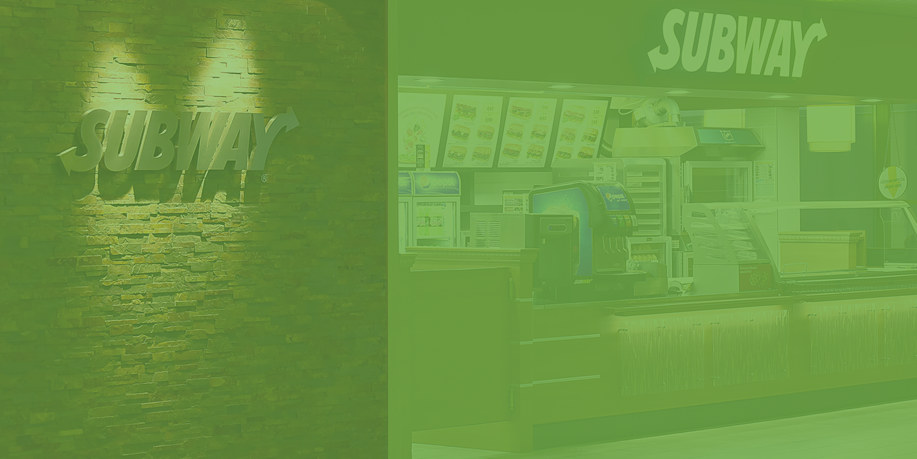
SUBWAY streamlines its global payments with nexo standards - A Case Study
About SUBWAY
Subway® restaurants, with more than 40,000 stores in over 100 countries and operating in 30 different languages, is known for its iconic made-to-order sub sandwiches and being the healthier choice among QSRs (quick service restaurants). Guests purchase an estimated 7 million sandwiches a day, equating to around 3 million electronic payments.
Digital payments acceptance is vital to the day-to-day Subway operations and managing a payment acceptance infrastructure across the diverse number of regions and at the phenomenal scale is critical.
This case study is an exploration of how specifications and protocols developed by nexo standards eased the strain of operating an international, franchised payment acceptance infrastructure.
Read on for an insight into:
- The payments acceptance challenges facing SUBWAY.
- Making the business case for nexo standards.
- SUBWAY’s implementation success story.
- The approach
- The size of the savings
- What’s next for SUBWAY.
The challenges facing SUBWAY
Providing a turnkey, fully interoperable payment terminal and POS system to accept and manage payments is a huge task for any merchant, especially one operating as many stores as SUBWAY. There are multiple elements and challenges to consider:
Acting locally, thinking globally
As an international franchise, SUBWAY needs to ensure the payment acceptance user-experience remains consistent. Whether in Australia or the USA, acceptance of the latest payment form factors needs to be universal, and the customer experience at the POS should remain seamless.
Payment terminals also must be compliant with unique domestic requirements, as well as international standards and specifications, to accommodate the different regions in which Subway operates. This means it requires a new device for each country, as well as setting up and managing multiple partnerships with different payments processing vendors and acquiring banks. In turn, each vendor brings its own challenges for SUBWAY to manage. As each utilize their own software and operate in different communication languages, SUBWAY had to create (and in turn, manage) its own middleware to enable it to support all suppliers.
When legacy and testing issues inhibit innovation
SUBWAY defines its own in-house POS system, however, the fragmentation in the global payments acceptance ecosystem has made it impossible for SUBWAY to deploy a single universal payments system and terminal solution. And, crucially, this has created significant additional overheads.
Testing comprises the most significant expense here – both in money and time, with many manual testing processes taking longer than initial development. Each time a new country-dedicated terminal device is deployed, SUBWAY undertook an internal testing process. To help speed up the process, SUBWAY created its own automated testing solution. However, this entire process costed SUBWAY around $50,000 per device and utilized significant valuable IT resources.
Not to mention the added challenge of each device requiring different levels of certification and re-testing, depending on the number of yearly update releases and fixes. Taking into account the number of different devices needed across the 100+ countries that SUBWAY operates, this entire testing and quality assurance would have cost the company an estimated US$7 million a year - all before the cost of the actual terminal device is even considered. In addition, as a new RFP process for a dedicated device was needed to be negotiated with vendors per country implementation, this also boosted costs.
SUBWAY’s Standardization Mission – Why nexo standards?
SUBWAY’s payments team recognized that utilizing universal industry standards was key to addressing their challenges. nexo standards offered SUBWAY the building blocks to establish a harmonized, cross-border payment acceptance solution that could be rolled out quickly and cost-effectively across the globe. With a single standardized solution across borders, SUBWAY would be able to significantly streamline those staggering annual testing costs and reimagine a harmonized global payments infrastructure without the complexity of proprietary protocols.
nexo standards enables fast, borderless and global payments acceptance by standardizing the exchange of data between all payment acceptance stakeholders. Its specifications and messaging protocols adhere to ISO 20022 standards, are universally applicable and fully open to offer the full spectrum of payment acceptance players the tools to reap the benefits of standardization. SUBWAY’s payments standardization project started around two years ago, in 2018. The goal was to develop and deploy a ‘plug and play’ nexo standards-based solution.
Making the Business Case for nexo standards:
- Remove vendor lock-in. Selecting nexo standards empowered SUBWAY to pick from a range of vendors and select solutions best fitting its technical and budgetary needs. Without constraints, it opens SUBWAY up to new, more innovative players to deliver their solutions - players who, in turn, are encouraged to deliver more competitive offerings.
- Strike better bank partnerships. Similarly, a standardized approach also enables retailers to negotiate bigger, better deals with fewer acquiring banks. For SUBWAY’s international footprint, this consolidation of partnerships means not only discounted transaction costs, but also reduced resource in relationship management.
- Streamline the testing process. By utilizing nexo standards, SUBWAY can fully virtualize the payment terminal, drastically reducing and automating its internal testing. This realizes significant cost and time efficiencies and, longer term, streamlines updates and debugging.
- Standardized input = better output. Utilizing the ISO 20022 data dictionary, nexo standards-based solutions enable SUBWAY to pool together more of its data across the globe that, previously, was simply too complex. Combined, this can provide scope for invaluable big trend data analysis that, in turn, can offer insights competitors would struggle to match.
- Boost innovation. With vital IT resource freed from laborious testing and compliance efforts, more time can be invested into analysis and informing innovation efforts.
After reviewing its capabilities, SUBWAY decided to use the nexo standards Retailer Protocol, which defines a set of interfaces between a card payment application and a retail point of sale system, as well as an extensive series of payment and loyalty services. It offers a common approach for all types of architectures and environments.
SUBWAY’s Implementation Story
From this multi-country approach with 6 connections to all different solutions…
SPOS = Subway POS
SPM = Subway Payment Manager

To a nexo device-based approach…

The Size of the Savings
To give some figures to the size of the savings SUBWAY realized by migrating to nexo standards, the below is an outline of its store footprint and a projection of how many devices and bank connections the Subway Payment Manager (SPM) would need to support and manage, had it continued operating without nexo standards:

Estimated testing costs

Projected yearly testing costs

As Benoit Lamoureux, Payment Product Owner at SUBWAY, declared at nexo’s Annual Conference in 2018, there’s “7 million good reasons to standardize…”
Following a public request for proposals (RFP) at nexo standards’ Annual Conference in 2018, SUBWAY began its search for payments partners to deliver on its nexo standards requirements. By developing one POS system on nexo FAST, SUBWAY was able to open its RFPs out across the globe and benefit from multiple providers and different solutions unique to each.
nexo can be considered as providing a building block approach. With nexo standards foundations - in this case, SUBWAY’s in-house developed sales system - multiple providers can use nexo’s specifications and protocols as building blocks to plug POI solutions into this shared POS system and support creating a whole system. Rather than an all-or-nothing approach, retailers can benefit from coopetition across nexo-compliant vendors to develop a comprehensive global solution using multiple providers.
Putting the pieces together
SUBWAY’s first collaborative POI device development project began with nexo standards Associate Member and payments processor, Adyen.
By leveraging the nexo Retailer Protocol, Adyen was able to develop a ‘plug and play’ solution that removed significant operational complexity for franchise owners to manage and accept payments in-store. The solution includes support for diverse payment preferences including loyalty, gift cards, mobile wallets and local payment methods, and auto-detects foreign language preferences. With nexo standards, the solution is also able to offer a single data view and shopper insights across channels and franchises, including revenue by channel, franchise or at restaurant-level.
SUBWAY began rolling out the solution earlier this year across North America. For an idea of scale, this region represents 25,000 restaurants and around 500,000,000 card transactions a year for SUBWAY.
SUBWAY’s RFP process now mandates that all its prospective payments partners provide solutions that adhere to the nexo Retailer Protocol.
Earlier this year, SUBWAY selected nexo Principal member, Worldline, as its payments partner for Europe. Far from the historic months of certification testing, this device was seamlessly integrated and began operating within less than three days - a remarkable achievement that’s saved significant time and cost. The pilot is live in Austria, Ireland and the Netherlands, and aims to have been implemented in all Subway restaurants across the continent by the end of the year.
Over in Australia, SUBWAY selected the Windcave solution , which has now been deployed in an estimated 90 % of restaurants in the country and is expected to be implemented across all the region's locations by the end of the year.
What’s next for SUBWAY?
Continued roll-out and adoption of nexo standards is now a strategic priority for SUBWAY. The RFP process has already begun in Mexico and will soon begin in New Zealand, as SUBWAY’s roll-out plans of nexo-based terminals expand further internationally.
The cost and resource saved using nexo standards is already evident from the solutions live in the field, with the scale of these savings only set to grow as deployments advance. Moreover, by championing international standards, SUBWAY has the power to select partners able to develop more innovative solutions that best address their customer needs, as well as budget requirements.
SUBWAY has taken back control of its payment acceptance network. With nexo standards, it has been able to cut the cost and the complexity of how it manages and accepts global payments. And, in turn, simplify and enrich the experience for both its franchise owners and end-consumers alike.

REMA 1000 levels up its payment ecosystem with nexo standards and Market Pay
REMA 1000, one of the leading discount grocery chains in Norway, faced critical challenges with its legacy payment infrastructure, including scalability issues, high operational costs, and a lack of transparency from its previous payment provider.
The need to add alternative payment methods, implement a new customer experience and have the ability to...



